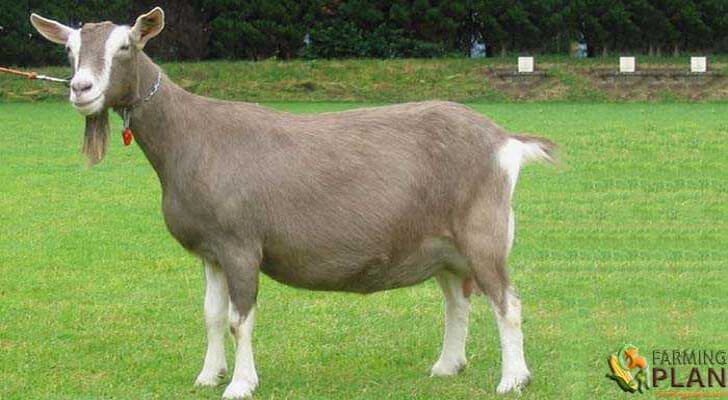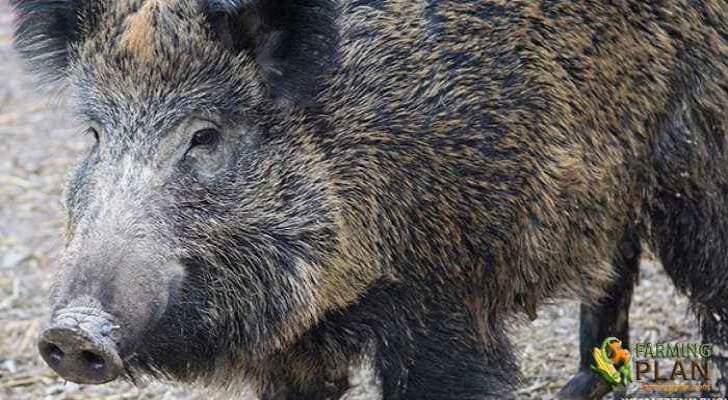Have you ever wanted to learn more about the rarest goat breed worldwide? Have you yearned to know what it’s like to keep and work with this unique animal? Look no further! In this ultimate guide, we will be delving into the fascinating story of the Arapawa Goat – its history, characteristics, and place in today’s society. From details on how to raise Arapawa Goats responsibly to their emotional impact on owners worldwide, these incredible goats have quite a tale to tell. With their dwindling numbers now at critical levels, according to The American Livestock Breeds Conservancy (ALBC), efforts must be taken globally if we are ever going to respond adequately in order not only to avoid an extinction event—but also ensure that future generations may continue to enjoy this lively creature. So join us as we explore all things related to the New Zealand Arapawa Goat!

History & Origin
The New Zealand Arapawa goat is one of the rarest breeds in the world. Native to New Zealand, this species is initially believed to have descended from early settler’s goats in the late 1700s; given that it has adapted well, this rare breed has remained relatively unchanged for centuries. Unfortunately, due to uncontrolled hunting, land conversion and interbreeding between domestic species, the Arapawa goat population numbers have steadily declined over the years, resulting in their classification as critically close to extinction by the American Livestock Breeds Conservancy. While conservation efforts are being taken to bring awareness and revive their numbers, it remains uncertain whether or not this precious breed can be saved from complete extinction.
Characteristics
The New Zealand Arapawa Goat is an incredible and rare animal. With striking features such as their white coats with black spotting, upright ears and the occasional blonde tuft of fur on their head, they can make beautiful additions to any farm. They generally remain small, typically growing to be roughly 150 pounds, and have unique physical characteristics that help them survive in cold weather climates. One of their most important traits is their self-reliant nature, requiring minimal human interaction after being bred in captivity – a trait that makes Arapawa Goats one of the most endangered breeds in the world, according to the American Livestock Breeds Conservancy.
Feed
Feeding the Arapawa goat is an essential task for preserving the species. The goats, who originate from New Zealand, graze on grass and foliage most of the year and can often be found searching for scrub to eat. In addition to these natural food sources, providing good quality hay such as alfalfa during spring and winter is especially necessary to keep their bodies in top condition since they now live in geographically separate parts of their native land due to their endangered status. While they may not be one of the most popular livestock animals, caring for this gorgeous and rare breed helps guarantee that we will still have them around for generations to come.
Usage
The Arapawa goat is a scarce livestock breed, classified as “critically close to extinction” by the American Livestock Breeds Conservancy. This remarkable breed hails from New Zealand and has many uses for farmers. It is highly resistant to winter weather, making it ideal for cold climates as its thick coat helps keep it warm during icy temperatures. Furthermore, Arapawa goats are excellent companion animals due to their attentive nature and gentle temperament. They are hardy animals that provide small farms with hearty and nutritious milk production and carrying capacity. In addition to acting as a practical garden roller through grazing, they produce valuable cashmere-grade wool. Unfortunately, this breed is facing the threat of extinction because the number of goats left in the world is dwindling each year. Therefore, it is paramount that people help preserve this unique animal so future generations can learn about them and experience their many uses on small farms worldwide.
Special Feature
With a population of fewer than 1000, the New Zealand Arapawa goat is one of the rarest breeds in the world. Admired for its long, silky coat and curved horns, human activity has thrown this eye-catching animal into peril. It is now listed as “critically close to extinction” by the American Livestock Breeds Conservancy. Celebrate its unique beauty with this particular feature on this captivating creature and help work towards keeping it around for future generations.
Understanding the Characteristics
The Arapawa Goat is one of the rarest – and most beautiful – goat breeds in the world, but it’s also one of the most endangered species. Unfortunately, this majestic animal is critically nearly vanishing from existence for good. The American Livestock Breeds Conservancy estimates that fewer than 500 Arapawa Goats are left today. While its physical appearance is remarkable, with large horns and swept-back faces that lend themselves to a regal visage, it’s essential to understand the unique characteristics of this breed to ensure that they’re preserved before they’re gone forever.
How to Care for an Arapawa Goat
Taking care of a rare Arapawa goat is a great responsibility! According to the American Livestock Breeds Conservancy, these majestic animals are critically close to becoming extinct. This means their well-being is paramount, and providing a safe and healthy home for them should be your top priority. Arapawa goats need plenty of space to graze, shelter from extreme temperatures or weather changes, clean water sources nearby and access to minerals and salt as dietary supplements. To ensure that your goat thrives in its new environment, make sure you also provide regular checkups with a qualified vet as preventative healthcare measures. You can help save this rare species from extinction with the right kind of care and attention!
What are Common Health Issues
The New Zealand Arapawa Goat is a rare breed, classified by the American Livestock Breeds Conservancy as critically close to extinction. While their numbers are dwindling, the health issues this breed can face are concerning. Common illnesses that Arapawa Goats may experience include abdominal parasites, respiratory problems due to an age-related decline in immunity, malnutrition due to poor grazing areas or insufficient nutrition of supplements. Regular checks and tests of these animals are essential for early diagnosis and effective treatment to ensure that this remarkable goat species remains healthy and part of our lives for generations.
Tips for Breeding
For those looking to preserve this rare breed, breeding and maintaining a healthy Arapawa goat herd is essential. Arapawa goats are hardy animals, but their numbers are so low that careful management of the pack is needed to make sure the population remains stable. Breeders should always prioritize health when selecting mating pairs, as strong genetics can minimize the risk of inherited diseases. They should also take measures to control predators, like foxes, which might otherwise menace young kids or adults in the herd. Even if you only have a single animal, taking good care of them will go a long way towards preserving this remarkable breed for future generations.
Why Every Animal Lover Should Own
Animal lovers looking for a unique pet should consider owning an Arapawa goat! This breed, native to New Zealand, is one of the rarest goats in the world and is classified as critically close to extinction by the American Livestock Breeds Conservancy. An Arapawa goat is friendly and hardy, making for an ideal backyard companion. It loves being fussed over, and its playful nature never fails to bring smiles to its owners’ faces. With plenty of room to roam, a well-cared-for Arapawa goat can live up to 10 years in a loving home. So, if you’re looking for a beautiful addition to your animal family, consider an Arapawa goat – it could be the perfect pet!
FAQ
How many Arapawa goats are there?
The Arapawa goat is a critically endangered livestock breed originally found on Arapawa Island in New Zealand. It is estimated that only around 500 of these goats are left in the world, with around 200 still living on the island and about 300 more spread throughout mainland New Zealand and Australia. In 2009, an official census revealed that the population of Arapawa goats had dwindled to just 75 animals living on the island at that time. Still, luckily, conservation efforts have resulted in a significant increase since then.
Are Arapawa goats extinct?
Arapawa goats are an ancient feral breed of goat that originated centuries ago on Arapawa Island in New Zealand. These remarkable animals have been threatened with extinction for so long due to predation and habitat loss. Fortunately, over the years, conservation efforts by a dedicated group of farmers and animal advocates have helped revive this critically endangered species.
Which goat is the milk queen of the world?
The world’s milk queen of goats is the Saanen goat. This is the largest and possibly most productive dairy breed of goats in the world, with some producing up to 3 gallons of milk per day! The Saanen originates from Switzerland’s valley of Saanen and is white or light grey. It also has long, erect ears set close together at a slight angle.
Conclusion
The New Zealand Arapawa goat is an exceptionally unique breed that is sadly close to becoming extinct. To help preserve the population, owners of this breed need to be educated on maintaining their health and well-being. With proper diet, exercise and the occasional visit to a veterinarian, the Arapawa goats can live a long, healthy life. As land development continues to increase at rapid rates worldwide, our responsibility to save species such as the Arapawa goat should become more pressing; it’s up to us as guardians of these animals to ensure they’re thriving in our homes and that their population increases instead of diminishes. With dedication and commitment from animal owners everywhere, we believe there’s hope to preserve this incredible species for many years to come.


